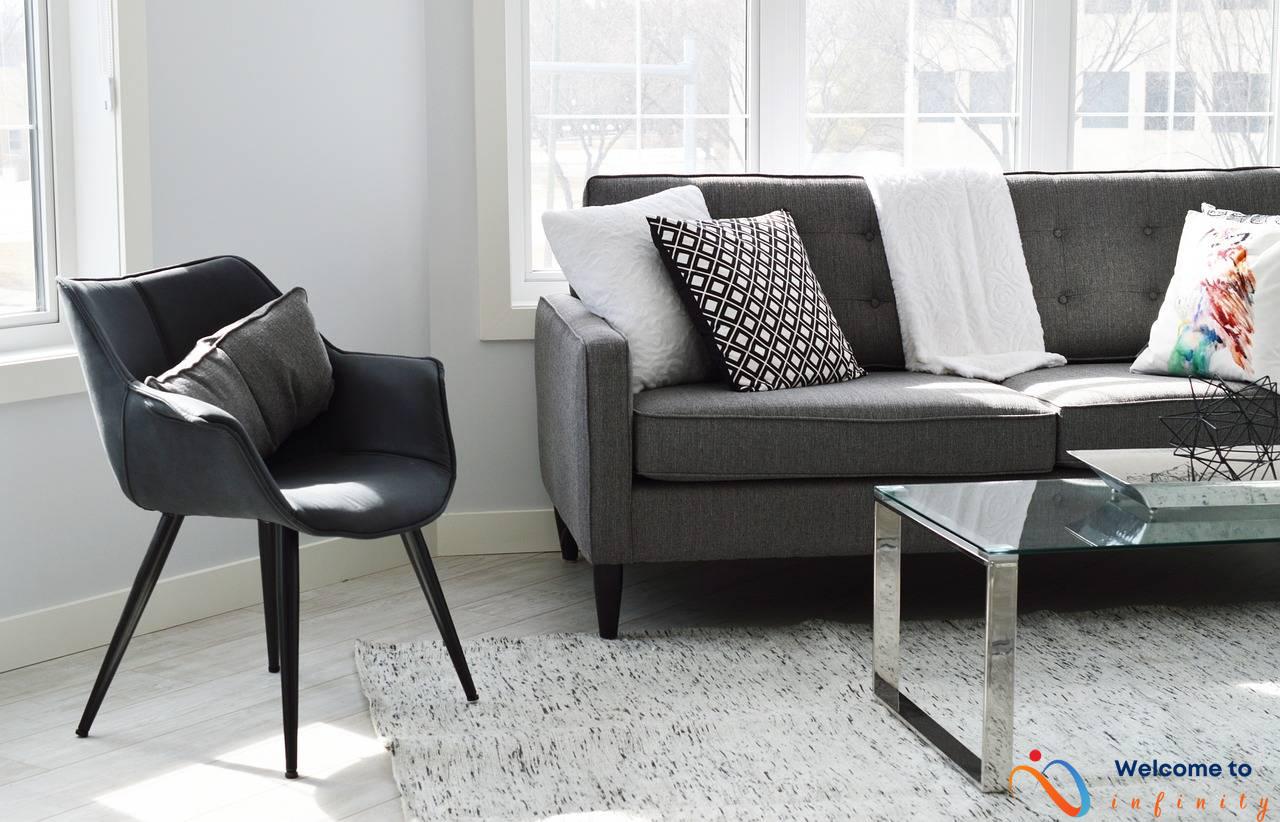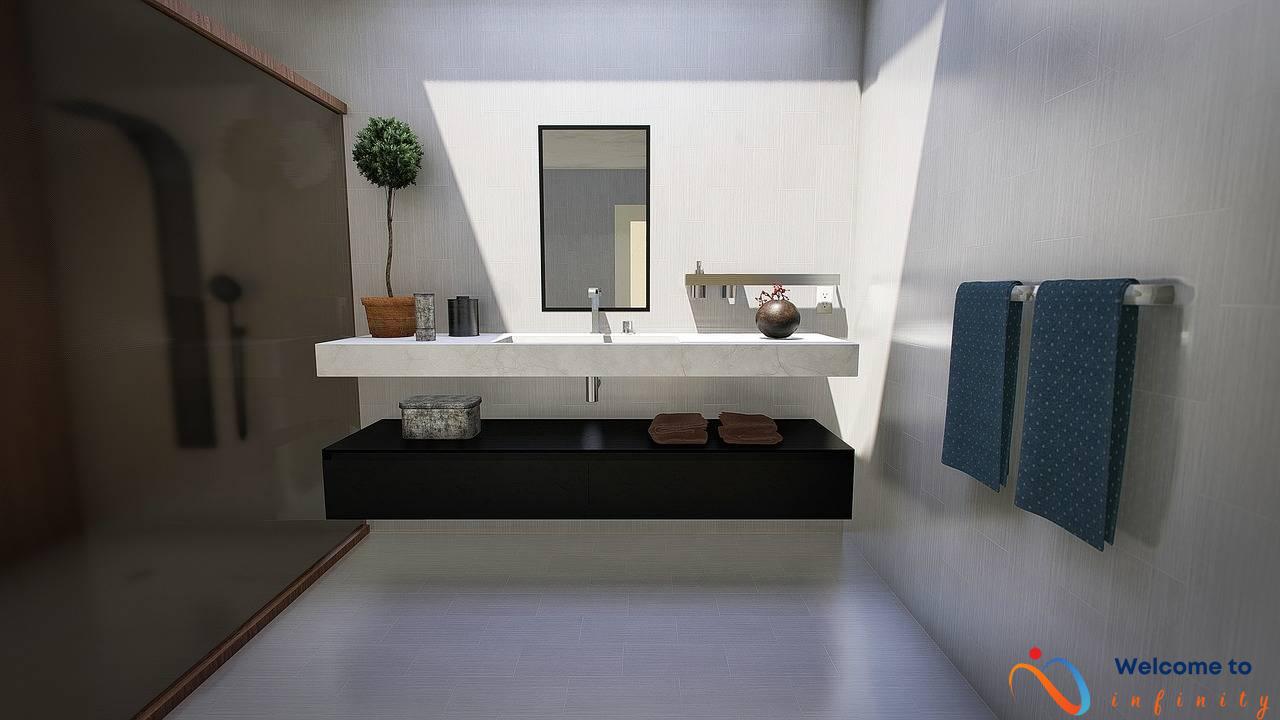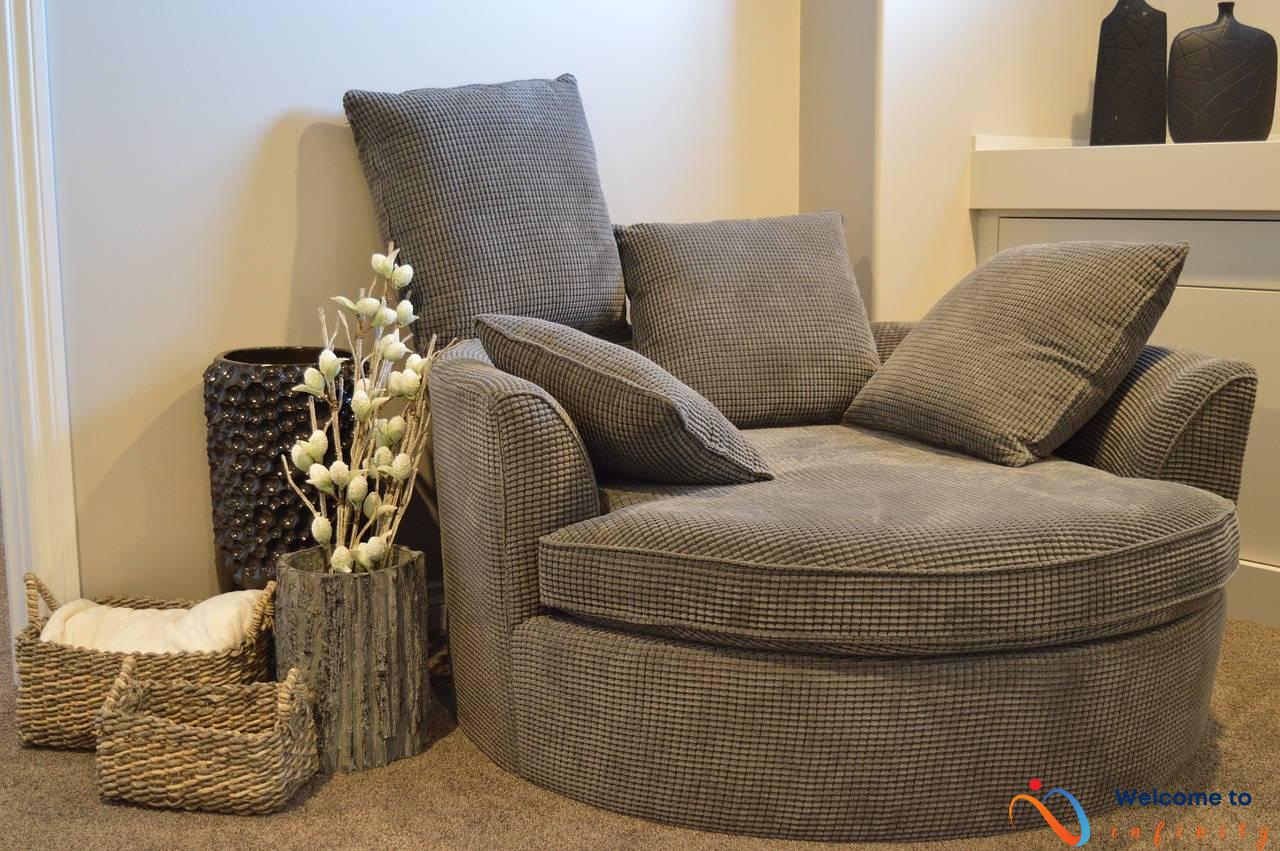Living with a disability can bring a unique set of challenges. But with the advent of smart home technology, daily tasks can become much more manageable. Smart home devices have the potential to make a significant impact on the lives of people with disabilities.
One of the primary benefits of smart home technology is increased independence. For individuals who may require assistance with certain tasks, smart devices can help reduce the need for a caregiver. With the ability to control appliances and other devices through voice commands or a smartphone, individuals can complete tasks that were once inaccessible. Additionally, smart home technology can greatly improve safety in the home. For example, smart locks can prevent strangers from entering the home, and smart thermostats can automatically adjust the temperature to ensure a safe and comfortable living environment.
However, there are also challenges to integrating smart home devices into an accessible home. One of the primary concerns is cost. Smart home devices can be expensive, and this cost may be a barrier for some users. Additionally, ensuring that the devices are compatible with each other can be a challenge. Finally, it is essential that smart home devices are user-friendly and easy to operate, especially for individuals with disabilities.
- Voice-Activated assistants
- Smart Locks
- Smart Thermostats
There are a variety of smart home devices that can be particularly useful for people with disabilities. Voice-activated assistants, such as Amazon Echo and Google Home, can perform a range of tasks, including turning lights on and off, playing music, and setting reminders. Smart locks can allow users to grant access to their home remotely and be operated using a smartphone or voice commands. Smart thermostats, on the other hand, can help users save money on energy bills by automatically adjusting the temperature based on their preferences.
Overall, smart home technology has the potential to make life more accessible for people with disabilities. However, it is important to carefully consider the benefits and challenges before integrating these devices into your home. By understanding the potential limitations and costs, you can make the best decision for your individual needs.
The Benefits of Smart Home Technology for Accessibility
Smart home technology is transforming the lives of people with disabilities by providing them with greater independence, safety, and comfort in their homes. Here are some of the key benefits:
- Increased independence: Smart home devices allow people with disabilities to control their environment without needing assistance from others. For example, they can turn lights on and off, adjust the thermostat, or control the TV with simple voice commands or a smartphone app.
- Improved safety: Smart home technology can help prevent accidents and emergencies by alerting users to potential hazards, such as smoke or carbon monoxide, and providing remote monitoring of activity in the home.
- Enhanced quality of life: Smart home devices can provide a more comfortable and convenient living environment, allowing people with disabilities to focus on other aspects of their life, such as work, education, or leisure activities. For example, they can use voice-activated assistants to play music, set reminders, or order groceries online.
Overall, smart home technology has the potential to transform the lives of people with disabilities by providing them with greater control, comfort, and security in their homes.
The Challenges of Implementing Smart Home Technology for Accessibility
while there are many benefits to integrating smart home technology into an accessible home, there are also several challenges that must be addressed. One factor that can make it difficult to implement these devices is the cost. Many smart home devices can be expensive, and this cost may be a barrier for some users.
Another challenge is compatibility. It is important to ensure that smart home devices are compatible with each other and with any assistive technology the user may be using. This can be particularly challenging as there are many different devices on the market, and not all of them are compatible with each other.
Finally, ease of use is also an important consideration. Smart home devices must be user-friendly and easy to operate in order to be effective for people with disabilities. If a device is difficult to use or requires a lot of technical knowledge, it may not be a practical option for some users.
In order to overcome these challenges, it is important to consider the specific needs of the user and to research different products to find the best fit. Some devices may be covered by insurance or government programs, making them more affordable for users. It is also important to read reviews and talk to other users to get an idea of how user-friendly different devices are.
Overall, while there are challenges associated with implementing smart home technology in an accessible home, the potential benefits are significant. By carefully considering the needs of the user and choosing the right devices, it is possible to make daily tasks easier and enhance quality of life for people with disabilities.
Cost Considerations
One of the biggest challenges of incorporating smart home technology into an accessible home is the cost. Smart home devices can be quite expensive, and this may be a major barrier for some users. However, it's important to keep in mind that the cost of these devices may be offset by the benefits they provide in terms of increased independence and improved quality of life.
Fortunately, there are some options available to help make smart home technology more accessible for users who are on a tight budget. For instance, some insurance policies or government programs may cover the cost of certain devices. It's worth doing some research to see what options are available.
Another way to reduce costs is to prioritize which devices are most essential for the user's needs. For example, if the user has limited mobility, it may be more important to purchase a voice-activated assistant or a smart lock than a smart thermostat.
Additionally, some smart home devices may offer long-term cost savings that can offset the initial investment. For example, smart thermostats can help users save money on energy bills by automatically adjusting the temperature to be more energy-efficient. Ultimately, it's important to weigh the costs and benefits of each device carefully before making a purchase.
Compatibility Issues
If you're considering incorporating smart home devices into an accessible home, it's important to keep compatibility in mind. Smart home devices need to be compatible with one another and with the user's assistive technology in order to be effective.
One challenge with compatibility is that not all devices are created equal. Some devices may be more compatible with certain types of assistive technology than others. For example, a smart thermostat may work well with a particular model of wheelchair or hearing aid, but not with others.
In addition, compatibility can be affected by the age of the smart home devices. Older devices may not be compatible with newer devices, particularly if they use different communication protocols or software platforms.
To ensure compatibility, it's important to research the devices you're considering and check their compatibility with other devices and assistive technology. You may also want to consult with an expert in smart home technology or assistive technology to help you make the best choices.
- Do your research and check compatibility before purchasing smart home devices
- Consider consulting with an expert to ensure compatibility with assistive technology
- Compatibility may be affected by the age of devices and communication protocols
If you take the time to ensure compatibility, you can avoid frustration and make the most of your smart home devices, ultimately improving accessibility and quality of life for individuals with disabilities.
Ease of Use
One of the most important considerations when integrating smart home technology into an accessible home is ease of use. For people with disabilities, the technology must be user-friendly and easy to operate. Devices should be designed with the user in mind and feature intuitive controls that allow for seamless interaction.
Smart home devices that are too complex or difficult to operate can be frustrating and may not offer the desired benefits. It is important to choose devices that are specifically designed for accessibility and that do not require extensive training or technical knowledge to use.
When selecting smart home devices, it may be helpful to consult with a specialist who can recommend devices and provide guidance on how to use them effectively. In addition, many manufacturers offer user guides and tutorials, and online forums can be a great resource for troubleshooting and support.
Overall, the ease of use is critical to the effectiveness of smart home technology in making life more accessible for people with disabilities. By choosing devices that are easy to operate and that meet the user's specific needs, individuals and organizations can ensure that the full benefits of smart home technology are realized.
Examples of Smart Home Devices for Accessibility
Smart home technology has revolutionized everyday life for individuals with various disabilities. For those who struggle with mobility, dexterity, or communication, smart home devices can offer greater independence and convenience. Here are some examples of smart home devices that can enhance accessibility:
Voice-activated assistants like Amazon Echo and Google Home are great tools for individuals with disabilities. These devices can perform a variety of tasks, including turning lights on and off, playing music, and setting reminders. They can even be used to control other smart home devices in the home, creating a fully integrated and accessible living space.
For individuals with limited mobility or dexterity, traditional locks can be difficult to use. Smart locks offer a convenient and accessible alternative. Smart locks can be locked and unlocked using a smartphone or voice commands, eliminating the need for keys. Users can also grant access to their home remotely, which can be particularly useful for individuals who have caregivers or family members who need access to the home.
Smart thermostats are a great option for individuals who have difficulty regulating the temperature in their home. These devices can be controlled using a smartphone, voice commands, or a remote control. Some smart thermostats can even learn a user's habits and automatically adjust the temperature to ensure optimal comfort and energy efficiency.
Overall, smart home technology has the potential to greatly enhance accessibility for individuals with disabilities. By utilizing devices such as voice-activated assistants, smart locks, and smart thermostats, individuals can enjoy greater independence and convenience in their daily lives.
Voice-Activated Assistants
One of the most popular and useful smart home devices for accessibility is the voice-activated assistant. Devices such as Amazon Echo and Google Home can perform a range of tasks, including turning lights on and off, playing music, and setting reminders. The ability to control devices using voice commands is particularly useful for people with disabilities who may have limited mobility or difficulty using physical switches or buttons.
Voice-activated assistants can also be integrated with other smart home devices to create a more connected and accessible home. For example, users can set routines that turn on specific lights and adjust the thermostat to a comfortable temperature with a single voice command. They can also use voice commands to lock doors and windows for added security.
One of the benefits of voice-activated assistants is their ability to learn and adapt to user behavior. Over time, the devices can learn the user's preferences and make personalized recommendations. They can also be customized to respond to specific voice commands, which can be particularly helpful for users with speech impairments or other communication challenges.
While voice-activated assistants are generally easy to set up and use, users may need to spend some time learning how to interact with the devices effectively. It may take some practice to get the voice commands right and ensure that the devices are responding correctly to user requests.
- Pros: Increased independence, easy to use, adaptable to user behavior, customizable voice commands
- Cons: May take some practice to learn how to use, requires an internet connection, may not work well in noisy environments
In conclusion, voice-activated assistants are a highly useful smart home device for people with disabilities. They provide an easy and intuitive way to control other smart home devices and can be customized to meet individual user needs. While there may be some challenges associated with using these devices, the benefits they offer make them well worth considering as part of an accessible home setup.
Smart Locks
For people with disabilities, smart locks can provide more independence and security. With a smart lock installed on the front door, users can grant access to their home remotely, which can be particularly useful for those who may have difficulty getting to the door quickly. Smart locks can be operated using a smartphone app or voice commands, which can eliminate the need for physical keys that may be difficult to use.
In addition to granting access remotely, smart locks can also provide added security features, such as monitoring who enters the home and sending notifications to the user's smartphone. Some smart locks also have features like auto-locking and unlocking, which can make entering and exiting the home easier for people with disabilities.
It's important to note that not all smart locks are compatible with every home and every smartphone model, so it's important to do thorough research before making a purchase.
- Smart locks can grant access to a home remotely
- Smart locks can be operated using a smartphone app or voice commands
- Smart locks can provide added security features, such as monitoring who enters the home and sending notifications to the user's smartphone
- Compatibility is an important consideration when choosing a smart lock
Smart Thermostats
Smart thermostats are a popular smart home device that can help people with disabilities control the temperature inside their homes. These devices can be controlled in various ways, including using a smartphone app, voice commands, or a remote control. Users can set the temperature to their desired level and the thermostat does the rest, automatically adjusting the temperature to maintain the set level.
One of the main benefits of smart thermostats is that they can help users save money on energy bills. These devices are designed to be energy efficient and automatically adjust the temperature based on patterns and preferences of the users. Additionally, users can set schedules and timers to further optimize their energy usage.
Some smart thermostats can also learn the behavior of users over time and adjust the temperature accordingly. They can detect when the user is at home or away, or even when they are in different rooms of the house, and adjust the temperature accordingly.
Smart thermostats can also be integrated with other smart home devices, such as smart locks and smart lights. For example, users can program their smart thermostat to turn off the heating or cooling system when they leave the house and lock the doors and turn off the lights.
- Can be controlled using a smartphone app, voice commands, or a remote control
- Automatically adjusts the temperature to maintain the set level
- Can help users save money on energy bills
- Can learn user behavior over time and adjust accordingly
- Can be integrated with other smart home devices
Overall, smart thermostats are a useful and energy-efficient device that can greatly benefit people with disabilities. However, it's important to choose a compatible device that fits the needs and preferences of the user and to ensure that it is properly installed and maintained.
Conclusion
In conclusion, smart home technology has the potential to greatly enhance the lives of people with disabilities. By allowing for greater independence and improved safety, smart home devices can make daily tasks easier and more efficient. However, there are challenges that must be addressed when integrating these technologies into accessible homes.
One of the main challenges is the cost associated with smart home devices. While they can be expensive, it's important to remember that some devices may be covered by insurance or government programs. Another challenge is ensuring compatibility with assistive technology, which is critical for the success of these devices. Smart home devices must also be user-friendly and easy to operate in order to be effective for people with disabilities.
By fully understanding the benefits and limitations of smart home devices, individuals and organizations can make informed decisions about integrating these technologies into their homes and facilities. Whether it's using voice-activated assistants for daily tasks or smart locks for increased security, there are a variety of smart home devices that can be particularly useful for people with disabilities.
In order to ensure successful implementation of smart home technology for accessibility, it's important to consider the unique needs and preferences of each user. With proper planning and education, smart home devices can greatly improve accessibility and enhance quality of life for people with disabilities.












